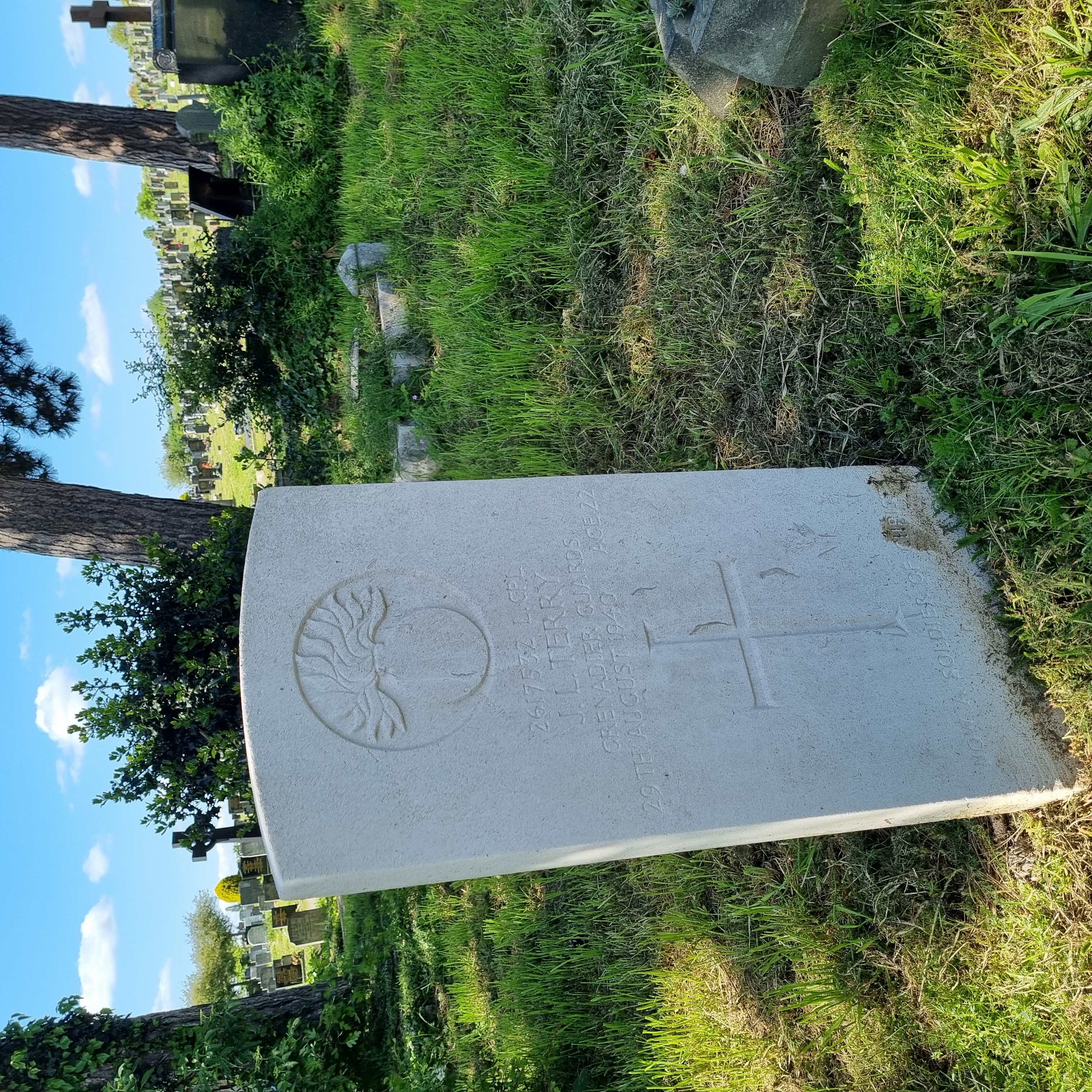On a recent tour of the Commonwealth War Graves at Carlton Cemetery, we were shown the grave of Lance Corporal John Leslie TERRY, of the Grenadier Guards. He died on 29th August 1940 and was 22 years of age.
What do we know about him?
Only the brief details recorded on military sites. We don’t know what his trade or profession was, nor where he went to school. We don’t have a photograph of him either.
John was the son of Arthur M. Terry and Mary E. Terry, of Moore Road in Mapperley. He had actually transferred to the Royal Marines as a commando, yet his death was not in a ‘corner of a foreign field’, hence his burial back home in Nottingham. John Terry died from injuries sustained during a night operation (unit exercise) in Essex. His injuries were from being struck by a locomotive. It is presumed that the training exercise involved an attack on railway infrastructure, at night.
The CWGC headstone at Carlton makes no reference to him being a commando, referring to the Grenadier Guards instead. He is remembered on the Army Commando Memorial Wall at the National Memorial Arboretum in Alrewas Staffordshire. L/Cpl Terry’s name is also recorded on the Commando Roll of Honour at Westminster Abbey.
8 Commando Unit was based at Burnham on Crouch in Essex at the time. Also serving with 8 Commando was Lt Evelyn Waugh, the renowned author.
It is the Wikipedia entry for Evelyn Waugh that gives us an idea of what the Royal Marines Commandos were involved in, and what John Terry would have been expected to do, had he not died so tragically.
What Were 8 Commando Involved In?
Waugh was commissioned into the Royal Marines in December of 1939, and entered training at Chatham naval base. His daily training routine for the writer left him with “so stiff a spine that he found it painful even to pick up a pen”.
In April 1940, he was temporarily promoted to captain and given command of a company of marines, but he proved an unpopular officer, being haughty and curt with his men.
After the German invasion of the Low Countries (10 May – 22 June 1940), his battalion was not called into action. Waugh also struggled to adapt to regimental life and he soon lost his command of his men. He was moved to became the battalion’s Intelligence Officer. In that role, he finally saw action in Operation Menace as part of the British force sent to the Battle of Dakar in West Africa (23–25 September 1940). Operation Menace failed however. The action was hampered by fog and misinformation about the extent of the town’s defences. The British forces withdrew on 26 September. Waugh’s comment on the affair was this: “Bloodshed has been avoided at the cost of honour.”
In November 1940, Waugh was posted to a commando unit, and, after further training, became a member of “Layforce”, under Colonel (later Brigadier) Robert Laycock. The unit sailed to the Mediterranean, where it participated in an unsuccessful attempt to recapture Bardia, on the Libyan coast.
Layforce was then required to assist in the evacuation of Crete, where Waugh was shocked by the disorder and its loss of discipline and, as he saw it, the cowardice of the departing troops. He wrote about this during the long journey home by troop ship. This writing was published in a book titled ‘Put Out More Flags’, a novel of the war’s early months in which he returned to the literary style he had used in the 1930s.
More Than A Headstone
Back to Lance Corporal Terry from Mapperley. We wonder what he would have become, had he survived the war.
What other family did he have and where are they now?
Does anyone visit his grave to pay their respects?

